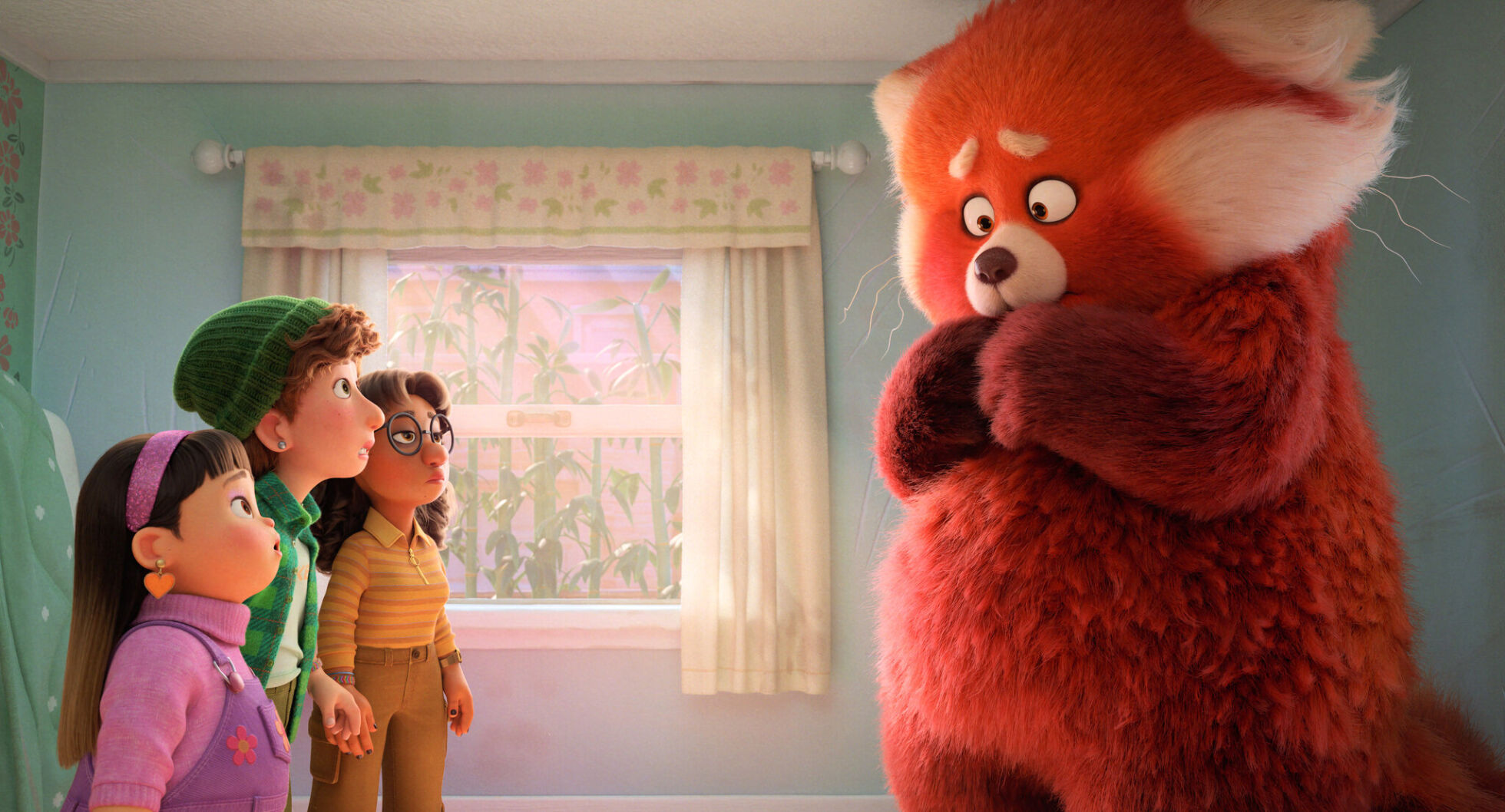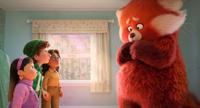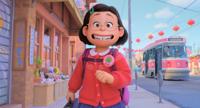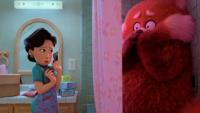Editor’s note: The views and opinions expressed in this review are solely those of Marlon Wallace and do not necessarily reflect the views and opinions of WBOC.
Pixar has a formula, as I noted in my review of Onward (2020). This film has elements of that formula, but it breaks from that formula somewhat. If anything, this film is akin to Oscar-winner Encanto (2021). It centers on a female protagonist. It takes place predominantly in one location, the family home. It involves the family members having magical powers. It also involves those family members possibly losing their powers. Specifically, the magical power in this film is the family member’s ability to transform into an animal or some other creature. In terms of a story of a person, particularly a young person, transforming into something else, Pixar has broached this before. Examples include Brave (2012), Soul (2020) and Luca (2021).
Transformations into something else has been a staple in various stories and films. People have pointed toward Teen Wolf (1985), which was a film that was about puberty. That film was about a teenage boy transforming into a werewolf. That transformation was meant to be a metaphor for puberty. Arguably, super-hero films have tackled a similar metaphor. X-Men (2000) and Spider-Man (2002) have addressed those same metaphors. Often though, those stories revolve around young men or boys. This film stands out because it revolves around a girl. It does what most Disney or even Pixar films haven’t done and that explores the idea for puberty for girls, even referencing menstruation.

This film is also part of the upswing of films made in North America that focuses on Asian characters or Asian culture without seemingly appropriating it. For the better part of 30 years, Hollywood has ignored the Asian community and didn’t make Asian characters the lead in films. Instead, Hollywood often appropriated the culture. There was a backlash in the mid 2010’s that culminated with huge criticism of Hollywood for engaging in what’s known as “yellow-face” in regards to properties like Ghost in the Shell (2017). Ever since then, the past, five years have seen a sea-change with more Hollywood studios putting Asian characters as the lead.
This film isn’t like Kung Fu Panda (2008) or Kubo and the Two Strings (2016), which are films that appropriate Asian culture, being made by non-Asians or star non-Asians in the lead roles. Better examples include Abominable (2019), Over the Moon (2020) and Raya and the Last Dragon (2021). Neither of those films were directed by Asians, but they featured Asians in the lead roles. Raya and the Last Dragon did have Asian writers, but the directors were not. This film is instead fully represented. Not only are Asians in the lead roles but the writer-director, Domee Shi is Chinese-Canadian.

I point all of this out because I had some thoughts about Asian representation and how it’s manifested in certain films. Last year, there was a discussion between David Chen and Walter Chow about Asian representation in film and in particular the film, Shang-Chi and the Legend of the Ten Rings (2021). The major issue that Chow had with that film is the stereotypes and cliches there that he believed reinforced negative perceptions of Asian people or tropes that could hurt Asian people mentally or socially. He pointed out things like the use of martial arts and the imagery of dragons.
It made me wonder if a similar case could be mounted against this film. In this film, the young protagonist in question named Meilin, voiced by Rosalie Chiang, discovers that she can turn into a giant panda, specifically a red panda. Pandas are obviously animals that are specific to Asia, more specifically China. Pandas are thus a stereotypical animal. Her family lives in a Buddhist temple, a religion that is also specific to Asia. Meilin’s father makes dumplings for dinner. Dumplings are a food most associated with Asia. At one point, we see the characters in a bamboo forest. Bamboo is also a tree specific to Asia.

Yes, Domee Shi is expressing things that are from her heritage and her culture, as well as country of origin, but things like pandas, dumplings and bamboo are stereotypical Asian things. I’ve seen them pop up in so many other films, including the aforementioned Shang-Chi and the Legend of the Ten Rings. If someone like Walter Chow thinks it’s unacceptable in that film, is it also unacceptable here? Unacceptable might not be the correct word, but does it reinforce certain negative stereotypes? Those stereotypes don’t seem negative, but reinforcing them may or may not be hurtful. Yes, Asian people are more than pandas and dumplings, but if Domee Shi wants to pull specifically from her heritage and culture, I doubt it’s to be hurtful. It may simply be lazy. I contrast it with Encanto, which is a film set in Colombia, and pulls from that culture without feeling stereotypical. Maybe, it’s because Colombian culture isn’t as well known or wide-spread, but that was my feeling from it.
Anyhow, this film is more about the relationship between Meilin and her mother, Ming Lee, voiced by Sandra Oh (Killing Eve and Grey’s Anatomy). Oh was also a voice in Raya and the Last Dragon and Over the Moon. Domee Shi’s narrative underlines that often certain behavior in parent-child dynamics are cyclical or often is the result of behaviors that have been passed down, just like anything in culture can be passed down. Yes, the title could be expression of the embarrassment a child feels at some of the things their parent does and vice-versa, but this film though underlines the idea that a child should be allowed to express him or herself however they choose, as long as it doesn’t hurt anyone else. The child should be allowed to be who they are. It’s not terrible Earth-shattering but it’s a message that is nicely and cutely rendered here.
Rated PG for suggestive content and language.
Running Time: 1 hr. and 47 mins.
Available on Disney +.




























